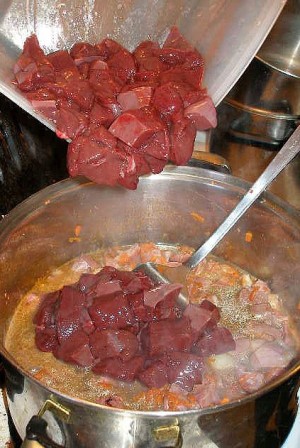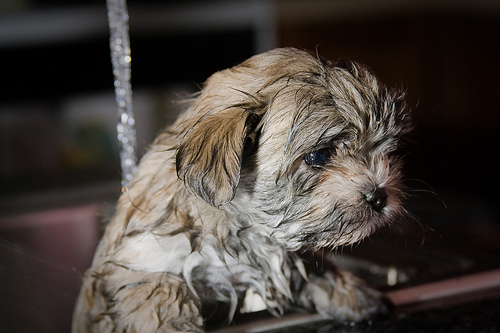
 Generally speaking, most pet foods contain a combination of protein, carbohydrate sources, vitamins, minerals, fats, and preservatives. Each ingredient plays an important role in providing enrichment to the body, and every combination of ingredients is regulated by the U.S. Food and Drug Administration (FDA) to ensure that our pets are being fed safe and nutritious products.
Generally speaking, most pet foods contain a combination of protein, carbohydrate sources, vitamins, minerals, fats, and preservatives. Each ingredient plays an important role in providing enrichment to the body, and every combination of ingredients is regulated by the U.S. Food and Drug Administration (FDA) to ensure that our pets are being fed safe and nutritious products.
The origin of the protein source depends on the type of product that is being made. Protein sources come in multiple forms, including fresh meats like chicken and beef, or they can be formed from various types of meat “meal.” Some meals are made from the ground-up parts of an animal that are not used for human consumption, usually the heart, liver, bone, feet and other such material that are categorized as the “by-products” of meat processing. The most commonly used animal by-products come from cows, pigs, sheep and poultry birds. These materials go to a rendering facility, where they are rendered, a process by which the fat and liquid is separated from the more solid bone and protein. At the same time, the materials are being cooked, sterilized, and dried for use in food products. This process makes the protein resistant to spoiling, and more digestible for your pet.
Other sources of protein can also be used as a base for pet food. Grains and vegetables are commonly used, especially for dog foods (dogs are omnivorous, unlike cats, which are carnivorous). On reading the lists of ingredients on your pets’ foods, you are most likely to see corn and wheat gluten meals, and textured soy protein, all of which are excellent sources for protein.
When we think of carbohydrates, our minds might turn to those that are most frequently discussed in dietary circles: breads, pastas, and potatoes. But carbohydrates also come in other forms. They can come from such things as soy, beans, rice, oats, corn, barley, wheat, and even a lot of vegetables (which are often much better sources for carbohydrate energy). Grains can be used whole, cracked, or they may be processed into meals to improve digestibility, and cereals provide a good source for carbohydrate energy in pet food diets.
A lot of the natural minerals and vitamins are lost during processing, making it necessary for food makers to add them separately. The domestication of cats and dogs has made supplementing an essential component of the food making process, since they cannot go out into the wild to find the sources for these ingredients on their own. Just as with humans, vitamins and minerals aid in the metabolic, digestive and immune system processes, and help to keep the nerves and blood cells at their healthiest.
Some pet food manufacturers will add vitamins such as vitamins E and C as antioxidants, but these vitamins can also serve as natural food preservatives. B vitamins are also at the top of the list, in the form of biotin, pyridoxine, riboflavin, thiamin, and beta-carotene. Other vitamins that are added to pet foods include vitamins A, D, and K. Minerals are added in the form of sodium, calcium, zinc, and phosphorous.
Minerals and vitamins are typically added in the form of powders and liquids in order to best incorporate them into the food. The addition of minerals and vitamins is the best way to ensure a nutritionally complete and balanced diet for domesticated animals.
Fats are not really the enemy. They are actually an essential part of any healthy diet. It is all in how much and what kind of fat you are using. Animals require a small amount of fat to keep their skin and hair healthy, and just as with human foods, fats also make a lot of foods taste better. Fats may come from animal or vegetable sources and are either sprayed onto the finished kibbles, or mixed into the food as it is being processed.
Chemicals and preservatives are added to many recipes to improve the taste of the food and to keep it stable and less likely to spoil. Animals do not respond to the color of food, as humans do, so added food colors can be thought of as a method pet food manufacturers use to appeal to the human consumer. There are as many manufacturers that do not use color as there are that do, and it is just a matter of researching for the best product, with the best ingredients, at the best price.
Color is generally not harmful to an animal (there is some dissention on this topic in the pet-health community), but neither is it nutritionally advantageous. Common chemicals include gelling agents for setting wet (canned) foods, and stabilizers, such as anti-caking agents, to prevent clumping of the food.
Image source: Bogart Handsome Devil / via Flickr
 Dancing with Your Dog
Maybe you have a dog that loves to move around t
Dancing with Your Dog
Maybe you have a dog that loves to move around t
 Heartworm Disease in Dogs
Heartworms in Dogs
By T. J. Dunn, Jr., DVM
Heartworm Disease in Dogs
Heartworms in Dogs
By T. J. Dunn, Jr., DVM
 The Price of the Spay (or Neuter) Procedure
The following is a copy of a "letter To The Editor&q
The Price of the Spay (or Neuter) Procedure
The following is a copy of a "letter To The Editor&q
 Euthanasia... What To Expect
By T. J. Dunn, Jr. DVM
You pick up that new
Euthanasia... What To Expect
By T. J. Dunn, Jr. DVM
You pick up that new
 5 Tips For Bath Time Fun with Your Pets
Whether it be a cat or dog you wish to bat
5 Tips For Bath Time Fun with Your Pets
Whether it be a cat or dog you wish to bat
Copyright © 2005-2016 Pet Information All Rights Reserved
Contact us: www162date@outlook.com